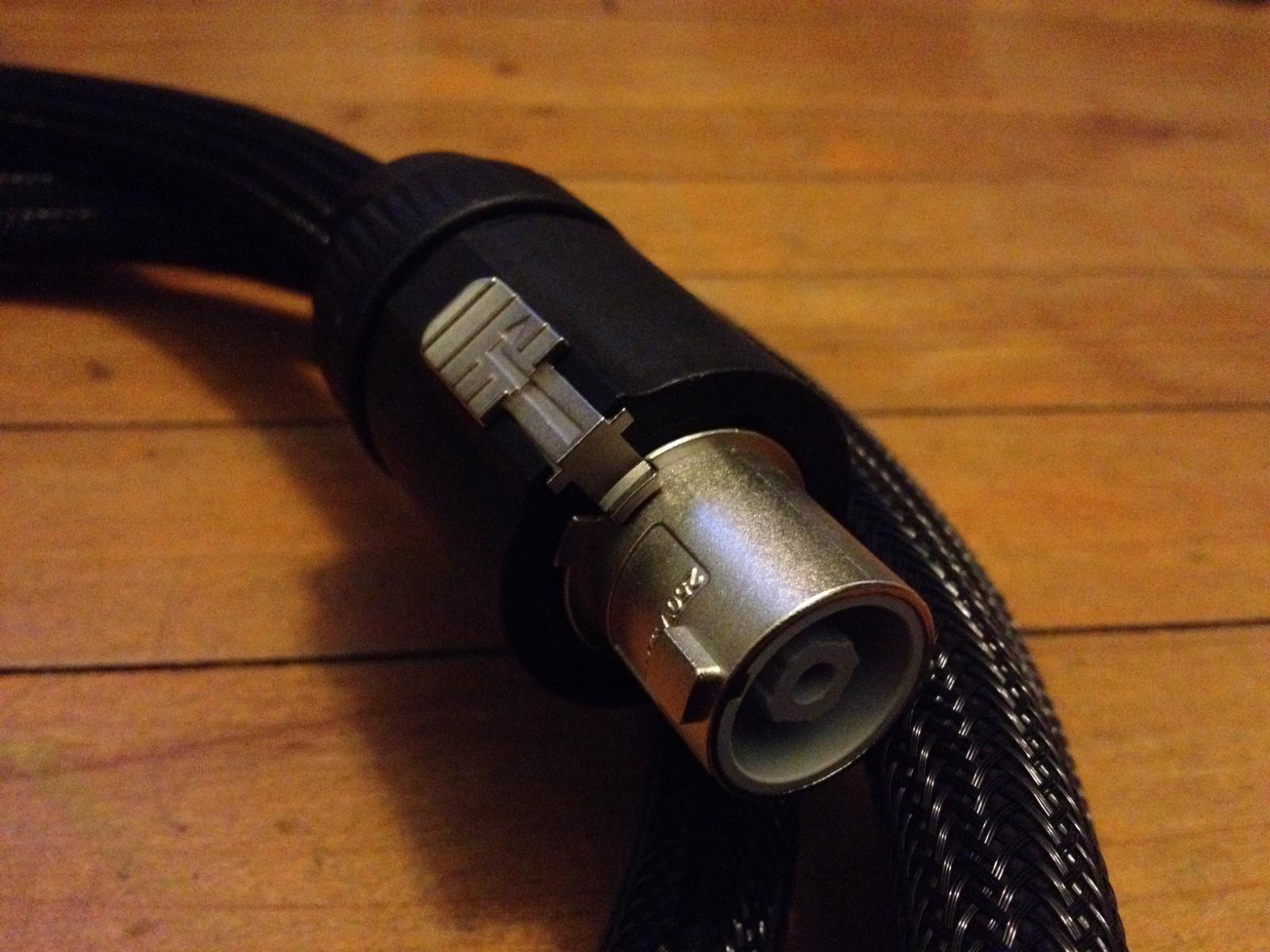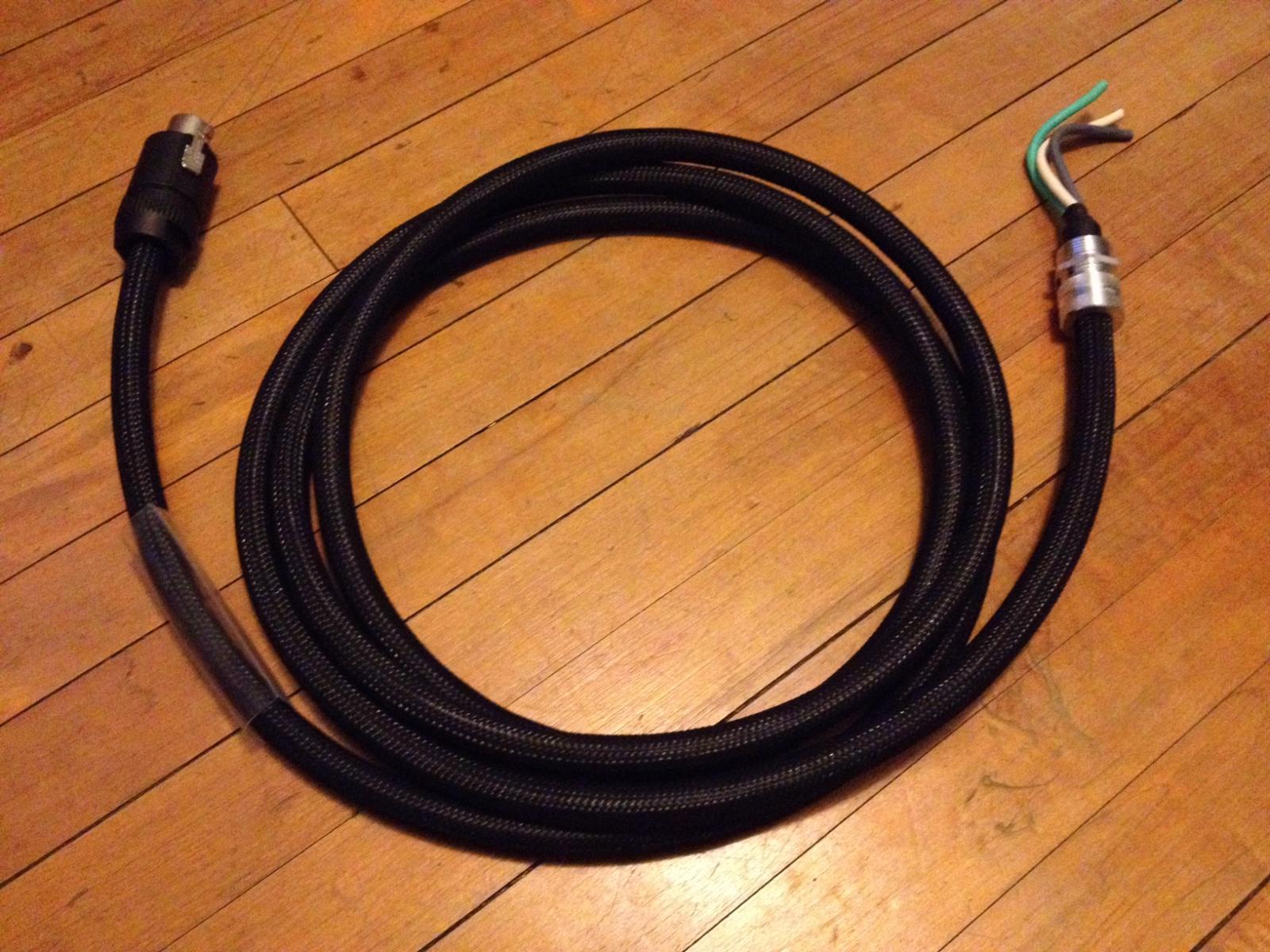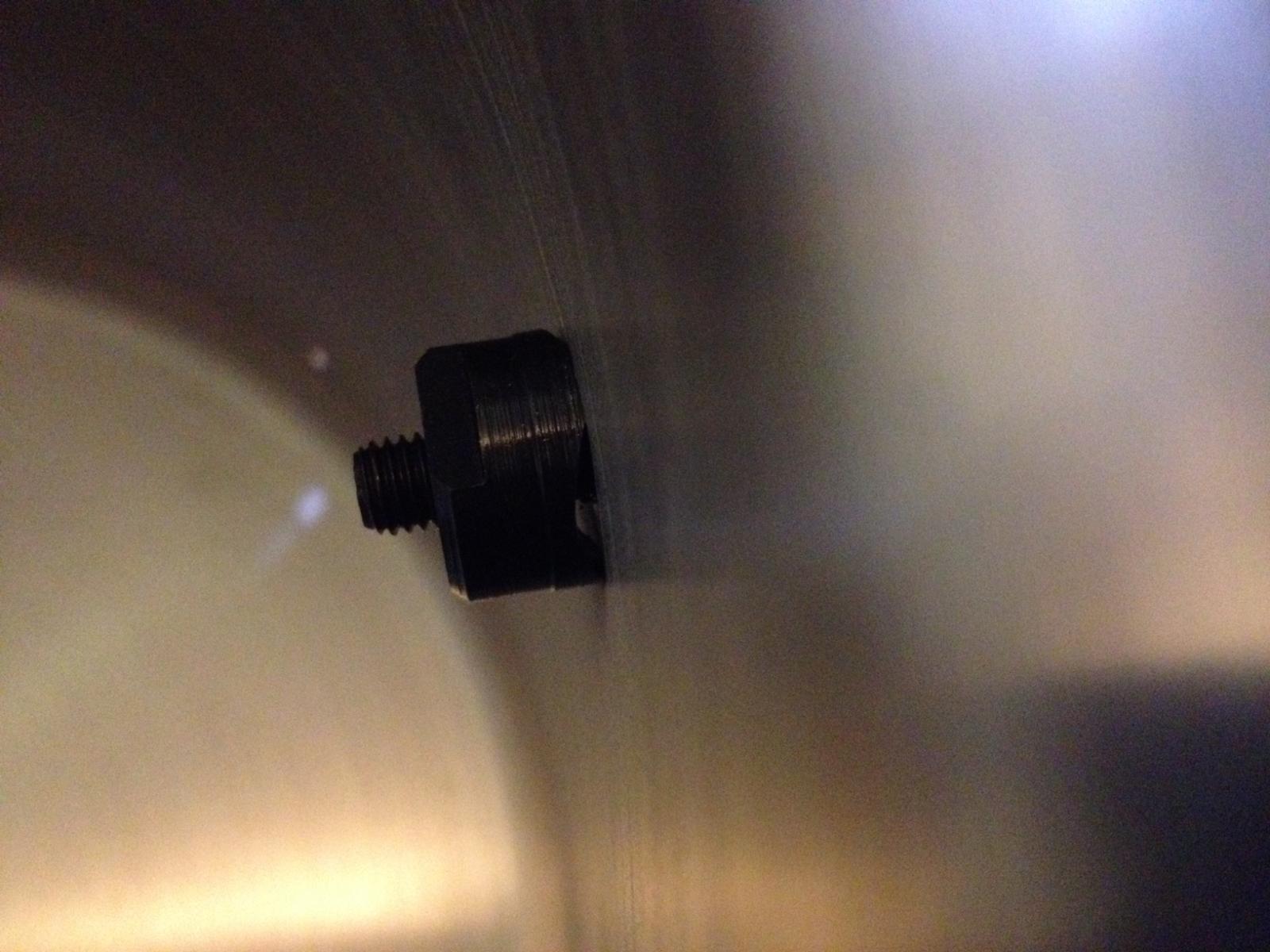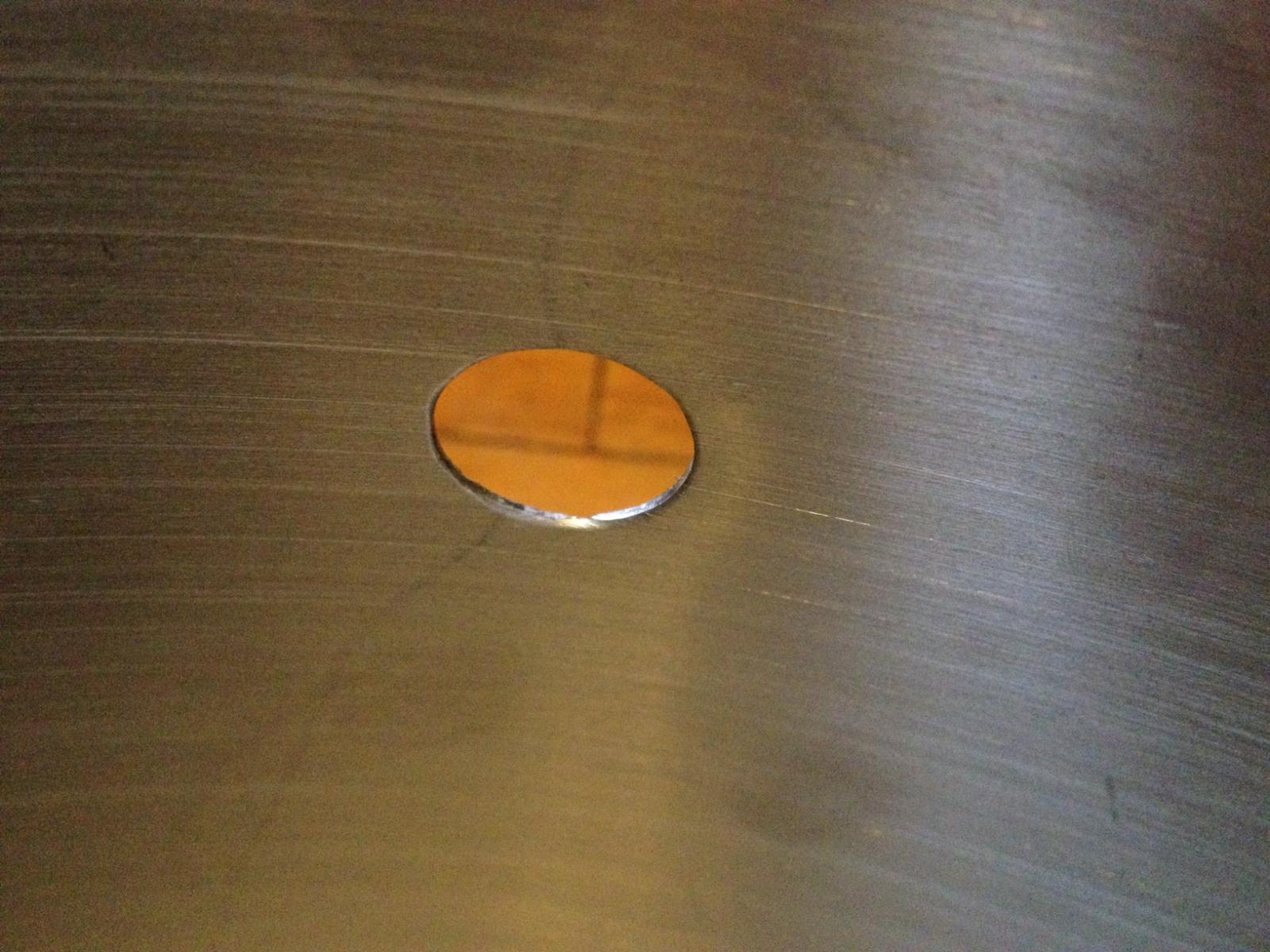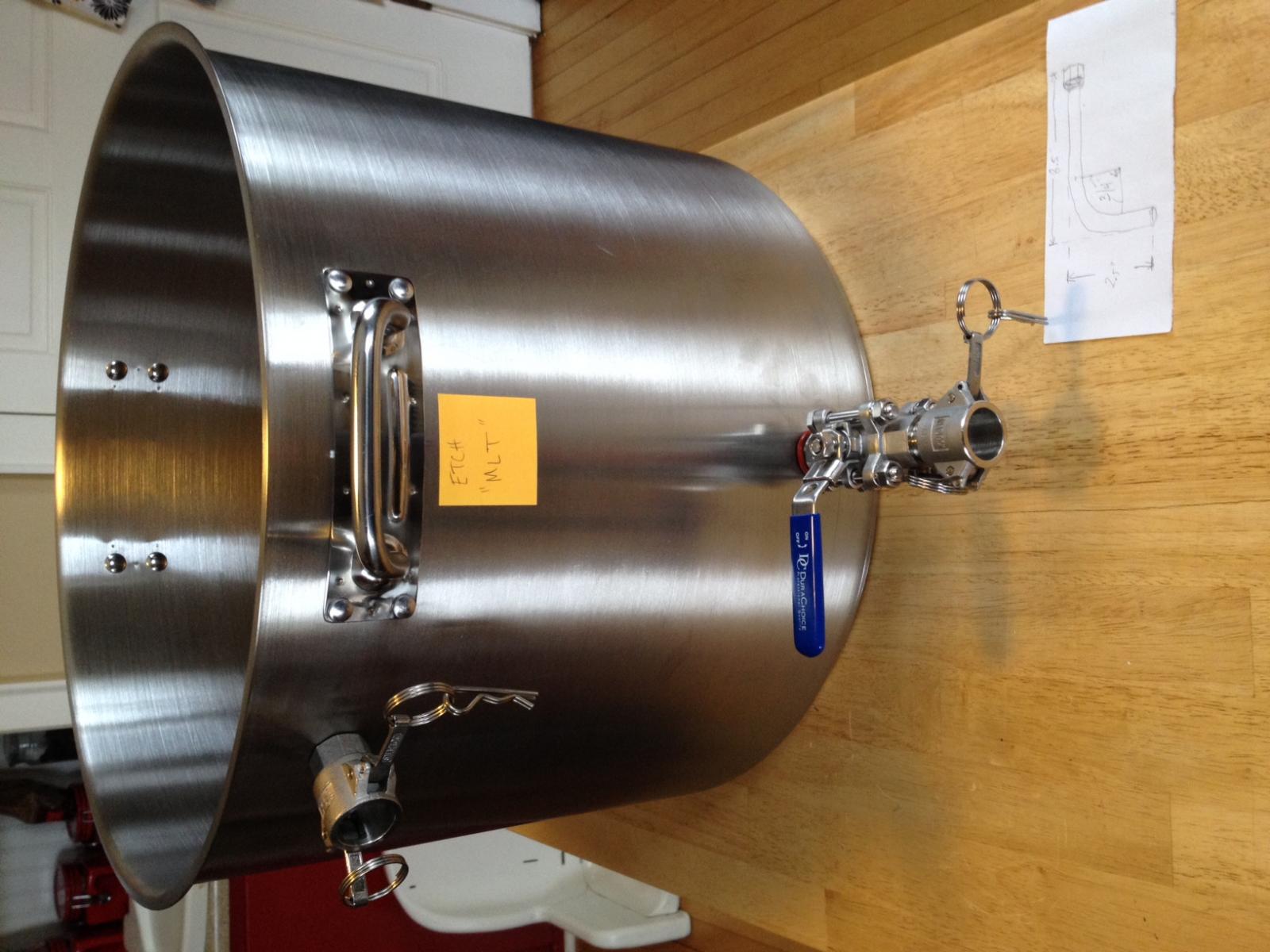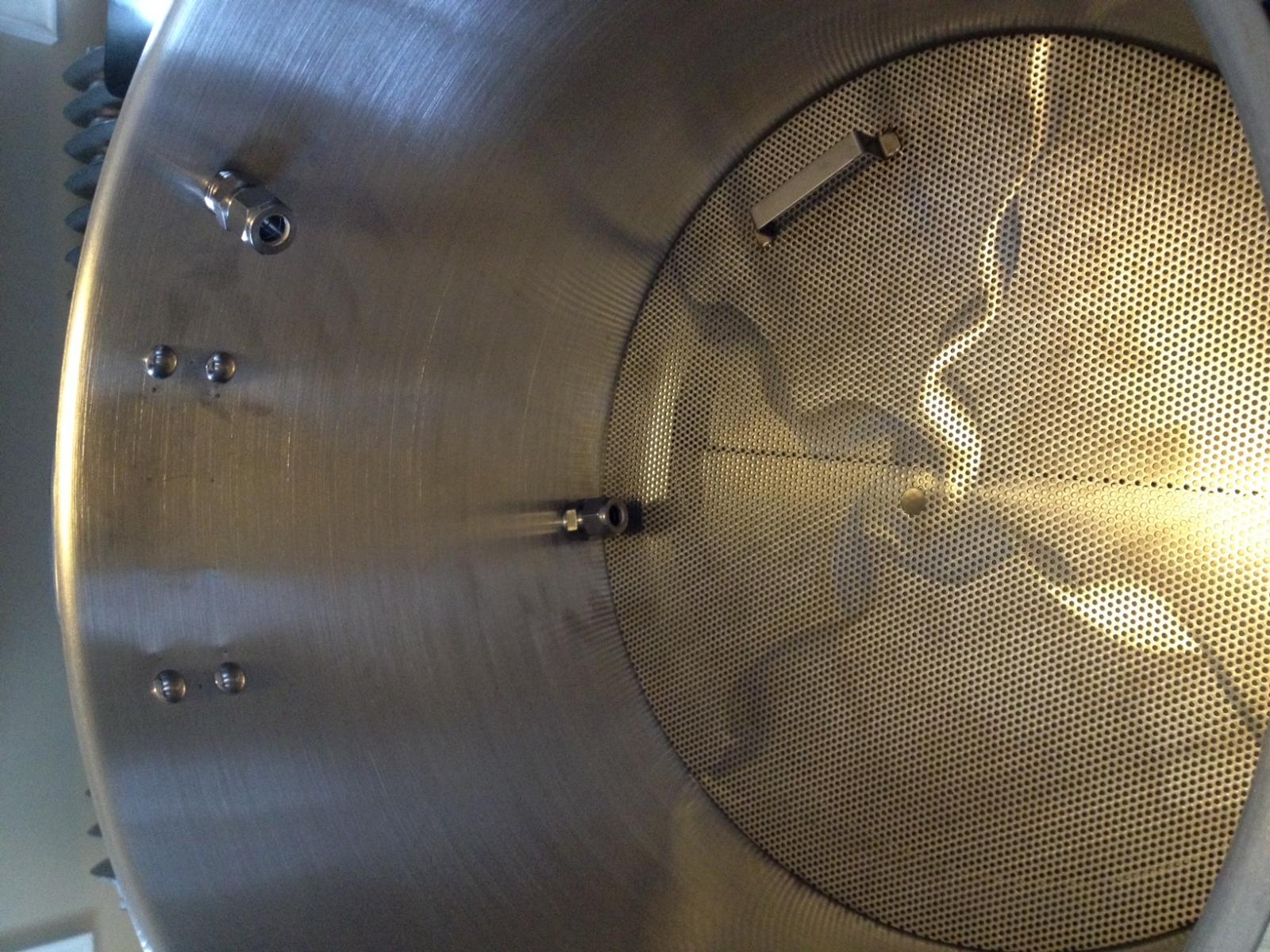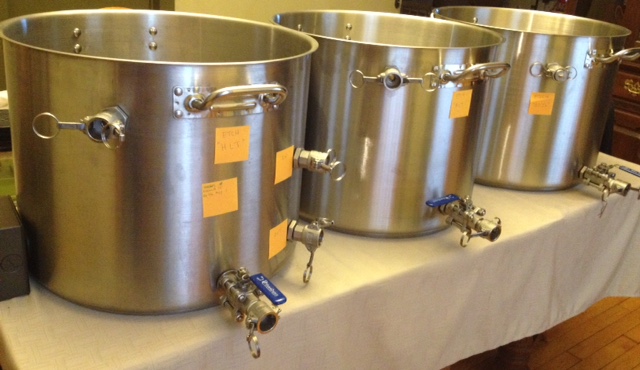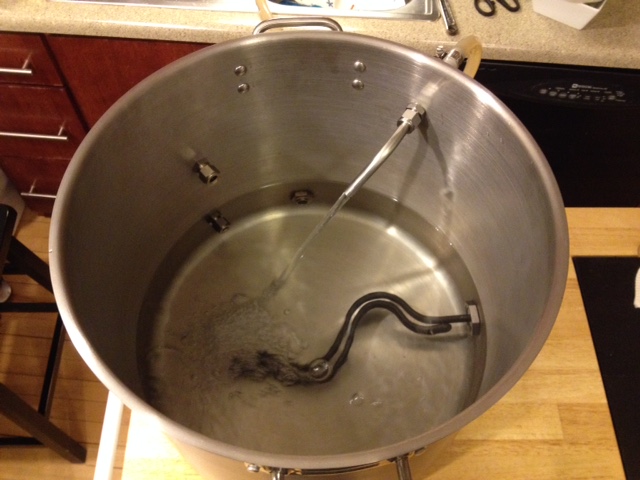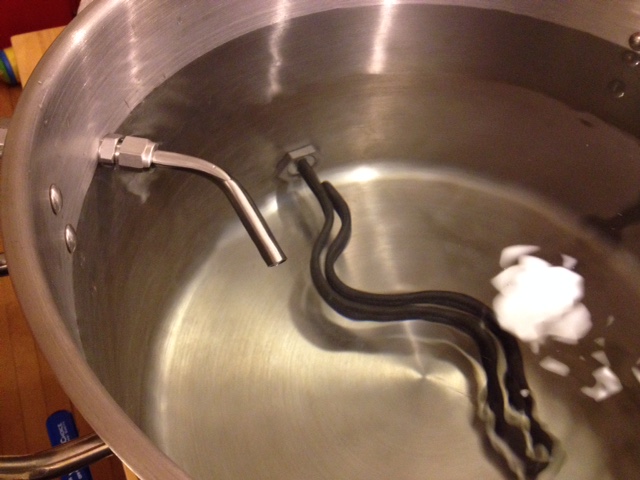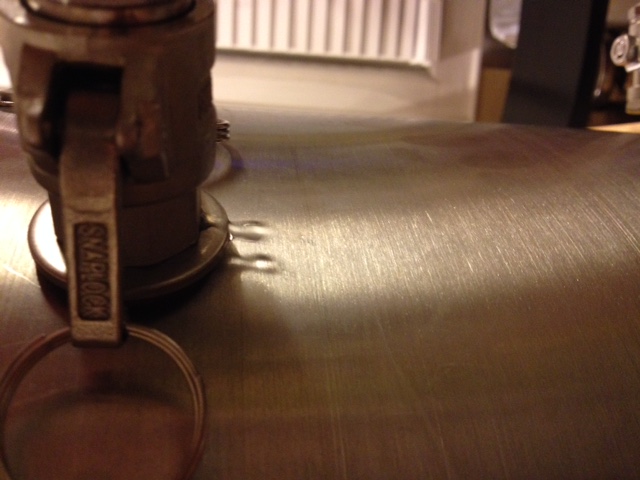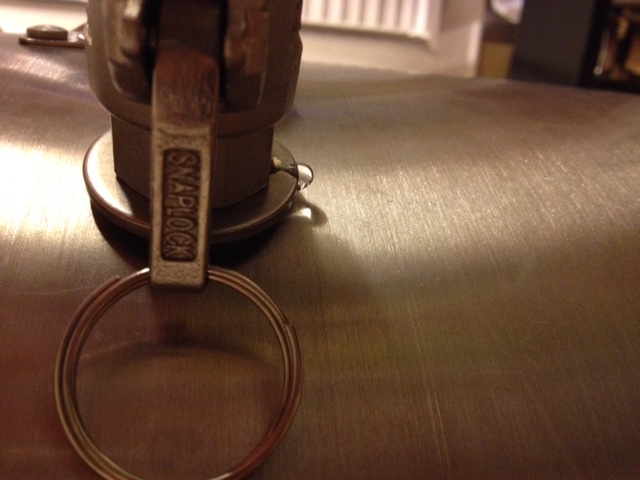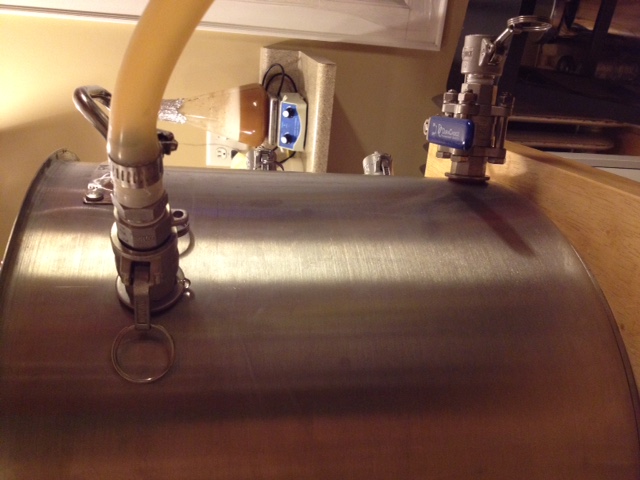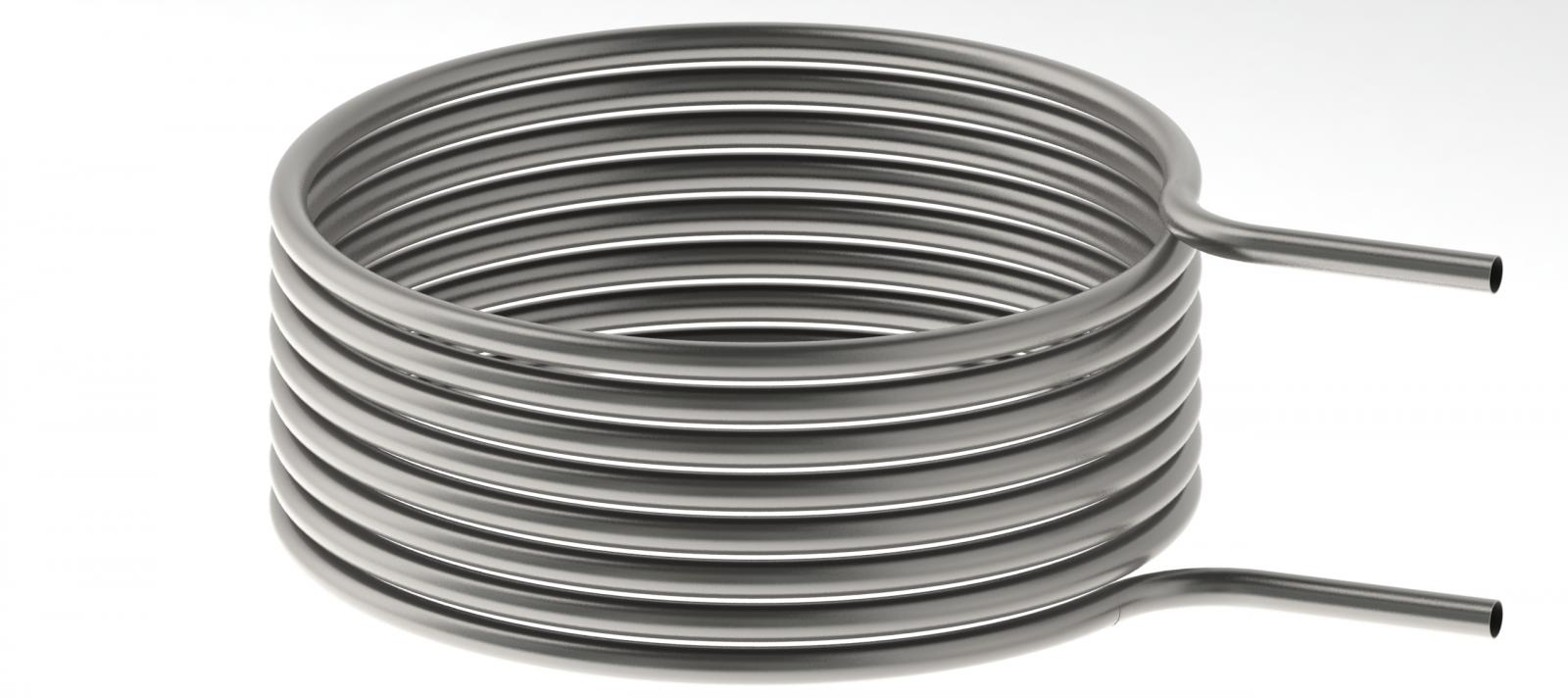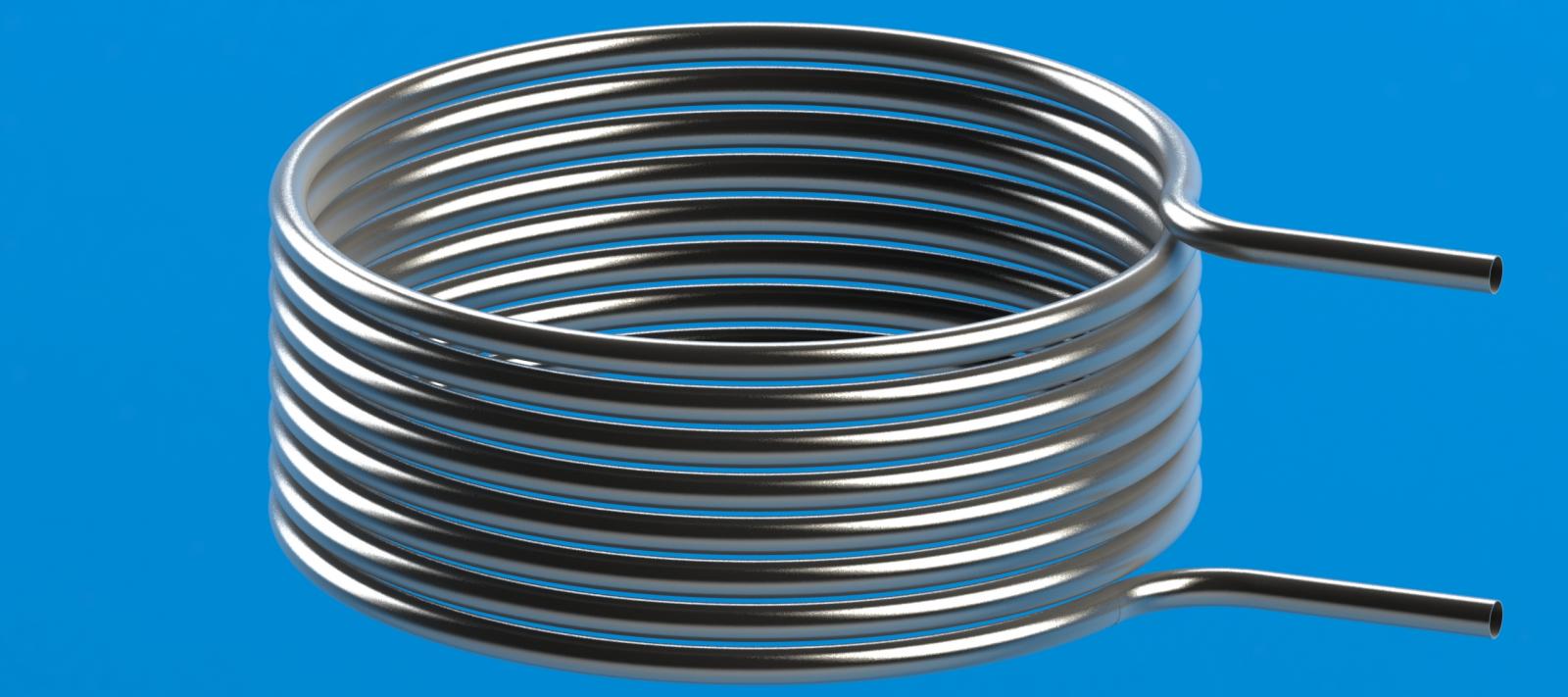Full Disclosure:
This will not be an overnight build in fact, this build is already about 2-3 years in the making, mostly idle time, and may very well take another year to complete (but lets be honest, is any brew system ever complete?)
My intent is that is build will help others learn from my mistakes, and hopefully those that have been down this path that I am about to venture, can help me prevent making the same mistakes they have made.
This post will be centered around what I plan on doing and what I have already done. I then plan on posting what my next steps will be.
Current System:
AG / Gravity fed / 5.5-6gal to fermenter
7.5gal Kettle used for HLT
Gott Cooler Used for MLT
15gal Kettle used for BK
Banjo Propane Burner (or Stovetop if its too cold)
The problem:
Safety: Like many homebrewers I routinely lift heavy kettles full of boiling wort or near boiling water (Including kettle weight ~100lbs pre boil/~85lbs post boil).
Precision and Consistency: I would like to have precision and repeatability of a commercial brewery, specifically with my mash temperatures.
Time: I enjoy homebrewing, but would like to reduce the time commitment, so I have more time to spend with my family or completing other brewing tasks or hobbies.
Cost: When brewing outdoors, my cost per batch increases by about $7-8 per batch in propane costs.
Brewing Needs:
Safety: I need to eliminate the need to move/lift hot liquids and filled kettles. Essentially the only lifting required will be fermenter/serving related.
Quality: I want predictable & repeatable results, eliminating much of the variation caused by the Human Element.
Time: I want to be able to manually operate the system when my time allows, but I would also like to automate the system when I do not have the time to commit (or dont want to brave the cold for extended periods of time)
Cost: I would like to keep my brewing costs relatively consistent regardless of where I am brewing.
Curveball: I would like to begin brewing remotely (From bed early in the AM, or from work if brewing in the PM).
End Goal:
Network Connected & Controllable Single Tier, 3 Kettle, 3 pump, Electric HERMS Brewery.
Credits: Besides the obvious Loving Wife; awesome Boys, Family, dog etc., etc.
The design concept comes largely from two sources.
Kal - from the electric brewery. Much of my control panel, heating element and HERMs coil choices were influenced by Kals design
JonW - the simplicity (and I use the term loosely) of the 3 pump design comes from JonWs design. With safety being such a high priority of mine, the cost of a third pump outweighed the potential for injury of mis-handling a hose during an automated step.
I thank you both for your generous contributions to this project. The rest of this project is mostly a product of my brainchild with bits and pieces pulled in from past jobs, experiences or websites/posts that I dont quite recall. If there is other credit owed, I will do my best to point it out whenever possible. If I lapse and you think I owe you, or someone else, credit, please dont hesitate to let me know.
Where am I today?:
Control Panel
I have a control panel mostly built. I started with the intent to use the Brewtroller.
I purchased the BT 4.0 Pro system, but after much trial and error, I was never able to reliably connect remotely to the system. Instead I have invested in the BCS Platform. With this system I will be able to remotely turn the full system on and begin brewing. I will have to make a few modifications to the control panel. But the space formerly used for the BT LCD I will likely keep as a window to see the inside of the panel.
Kettles - 60 or 80qt Kettles
I purchased the 3 kettles that I will use, they are Winware 60qt/15gals from amazon. Now that I am older and wiser, I should have purchased the 80qt/20gal size.
I have a falsebottom from NorCal brewing.
Thus far I have built 2 - 5500W heating elements almost matching the EB setup. One of the major differences in design is the use of Neutriks PowerCon 32 Amp connectors instead of the L6-30 Connectors suggested by Kals design. The L6-30s are bulky in my opinion. Plus from the panel design perspective - about 4 of the PowerCon panel mount connections fit in the space of one L6-30 Receptacle - leaving plenty of room to grow!
Neutrik PowerCon - PowerCon 32a Plug
Neutrik PowerCon Socket - PowerCon 32a Socket
Linked for future reference and as a reminder to etch my kettles:
https://byo.com/stories/issue/item/3113-etch-your-kettle-projects
Stand
Not started, but have designed a few solidworks models and junked most of them.
Thats about it for now. Sorry for the novel. Pictures to come soon!
Let me know if you have any questions or suggestions! I look forward to hearing comments!
Thanks,
Max
This will not be an overnight build in fact, this build is already about 2-3 years in the making, mostly idle time, and may very well take another year to complete (but lets be honest, is any brew system ever complete?)
My intent is that is build will help others learn from my mistakes, and hopefully those that have been down this path that I am about to venture, can help me prevent making the same mistakes they have made.
If its worth doing, its worth overdoing.
This post will be centered around what I plan on doing and what I have already done. I then plan on posting what my next steps will be.
Current System:
AG / Gravity fed / 5.5-6gal to fermenter
7.5gal Kettle used for HLT
Gott Cooler Used for MLT
15gal Kettle used for BK
Banjo Propane Burner (or Stovetop if its too cold)
The problem:
Safety: Like many homebrewers I routinely lift heavy kettles full of boiling wort or near boiling water (Including kettle weight ~100lbs pre boil/~85lbs post boil).
Precision and Consistency: I would like to have precision and repeatability of a commercial brewery, specifically with my mash temperatures.
Time: I enjoy homebrewing, but would like to reduce the time commitment, so I have more time to spend with my family or completing other brewing tasks or hobbies.
Cost: When brewing outdoors, my cost per batch increases by about $7-8 per batch in propane costs.
Brewing Needs:
Safety: I need to eliminate the need to move/lift hot liquids and filled kettles. Essentially the only lifting required will be fermenter/serving related.
Quality: I want predictable & repeatable results, eliminating much of the variation caused by the Human Element.
Time: I want to be able to manually operate the system when my time allows, but I would also like to automate the system when I do not have the time to commit (or dont want to brave the cold for extended periods of time)
Cost: I would like to keep my brewing costs relatively consistent regardless of where I am brewing.
Curveball: I would like to begin brewing remotely (From bed early in the AM, or from work if brewing in the PM).
End Goal:
Network Connected & Controllable Single Tier, 3 Kettle, 3 pump, Electric HERMS Brewery.
Credits: Besides the obvious Loving Wife; awesome Boys, Family, dog etc., etc.
The design concept comes largely from two sources.
Kal - from the electric brewery. Much of my control panel, heating element and HERMs coil choices were influenced by Kals design
JonW - the simplicity (and I use the term loosely) of the 3 pump design comes from JonWs design. With safety being such a high priority of mine, the cost of a third pump outweighed the potential for injury of mis-handling a hose during an automated step.
I thank you both for your generous contributions to this project. The rest of this project is mostly a product of my brainchild with bits and pieces pulled in from past jobs, experiences or websites/posts that I dont quite recall. If there is other credit owed, I will do my best to point it out whenever possible. If I lapse and you think I owe you, or someone else, credit, please dont hesitate to let me know.
Where am I today?:
Control Panel
I have a control panel mostly built. I started with the intent to use the Brewtroller.
I purchased the BT 4.0 Pro system, but after much trial and error, I was never able to reliably connect remotely to the system. Instead I have invested in the BCS Platform. With this system I will be able to remotely turn the full system on and begin brewing. I will have to make a few modifications to the control panel. But the space formerly used for the BT LCD I will likely keep as a window to see the inside of the panel.
Kettles - 60 or 80qt Kettles
I purchased the 3 kettles that I will use, they are Winware 60qt/15gals from amazon. Now that I am older and wiser, I should have purchased the 80qt/20gal size.
I have a falsebottom from NorCal brewing.
Thus far I have built 2 - 5500W heating elements almost matching the EB setup. One of the major differences in design is the use of Neutriks PowerCon 32 Amp connectors instead of the L6-30 Connectors suggested by Kals design. The L6-30s are bulky in my opinion. Plus from the panel design perspective - about 4 of the PowerCon panel mount connections fit in the space of one L6-30 Receptacle - leaving plenty of room to grow!
Neutrik PowerCon - PowerCon 32a Plug
Neutrik PowerCon Socket - PowerCon 32a Socket
Linked for future reference and as a reminder to etch my kettles:
https://byo.com/stories/issue/item/3113-etch-your-kettle-projects
Stand
Not started, but have designed a few solidworks models and junked most of them.
Thats about it for now. Sorry for the novel. Pictures to come soon!
Let me know if you have any questions or suggestions! I look forward to hearing comments!
Thanks,
Max





